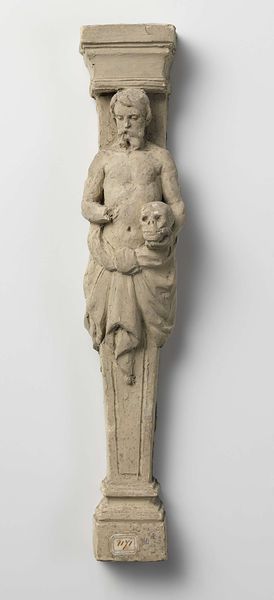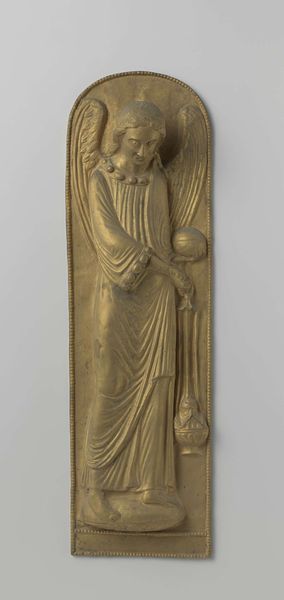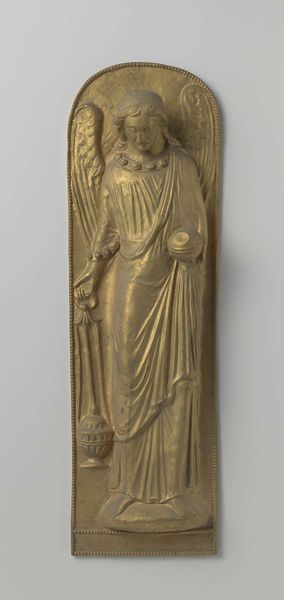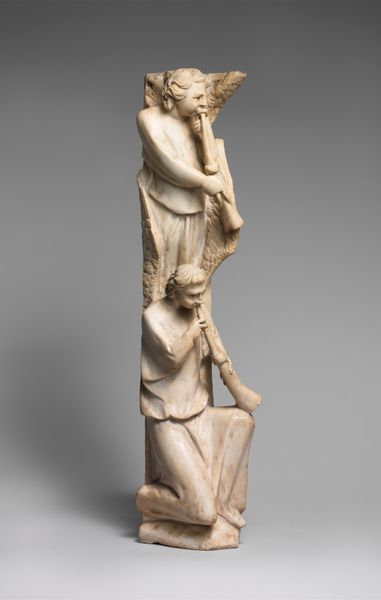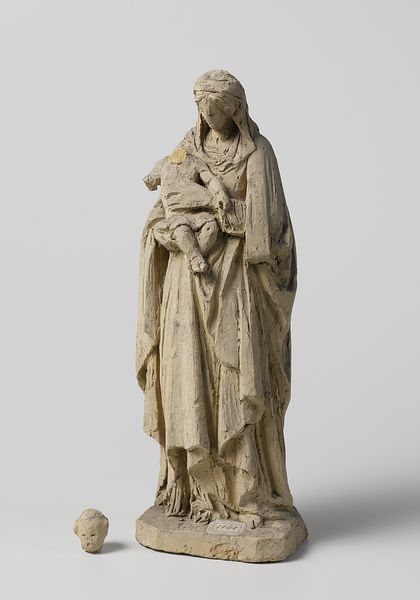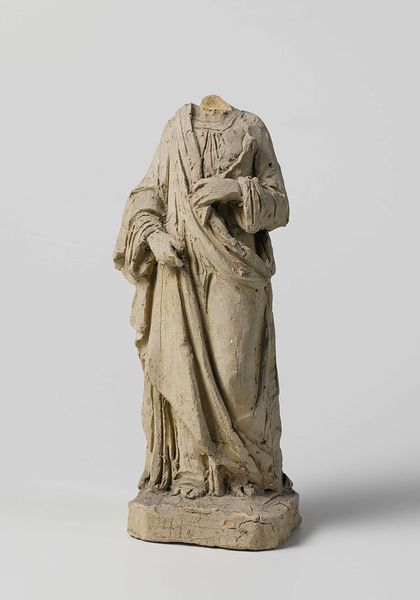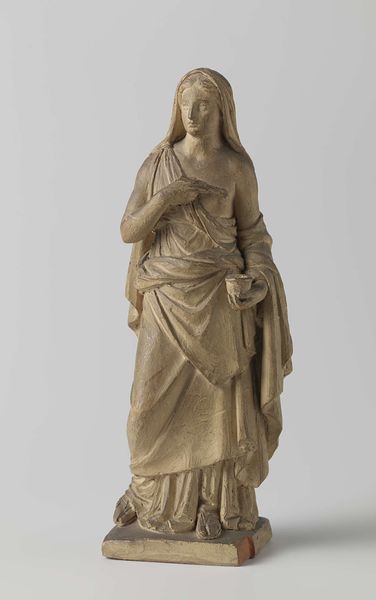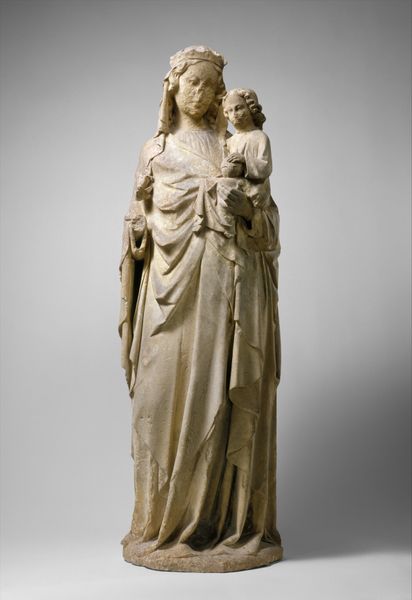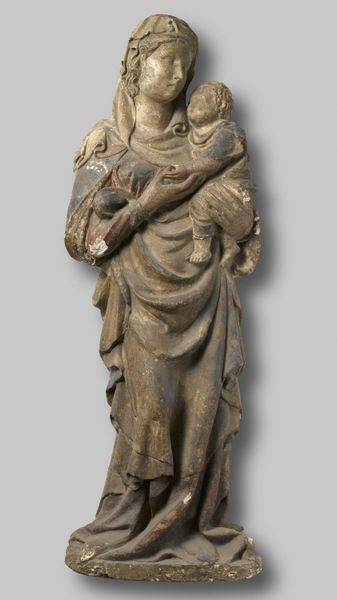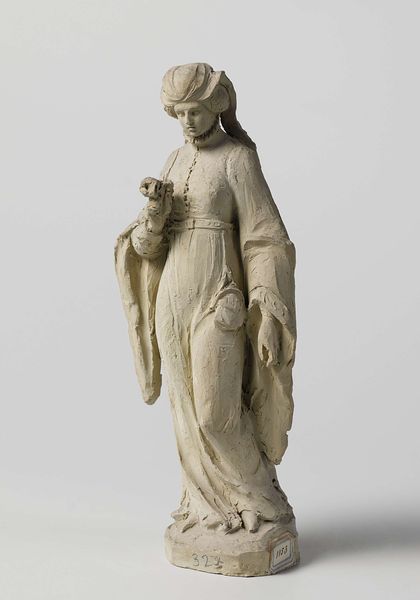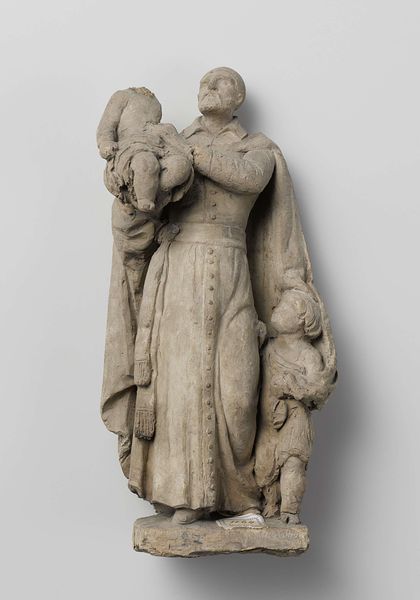
sculpture, plaster
#
portrait
#
neoclacissism
#
sculpture
#
figuration
#
sculpture
#
plaster
#
academic-art
Dimensions: height 43 cm, width 9 cm, depth 6 cm
Copyright: Rijks Museum: Open Domain
This ‘Karyatide’ was crafted by Eugène Lacomblé in the 19th century, apparently from plaster. It shows a female figure with a book, possibly intended to represent Theology. Plaster is a humble material, often used for architectural moldings or inexpensive reproductions of sculptures. Its pale color and matte surface give the piece a subdued presence. The process of creating plaster involves mixing a dry powder with water, then pouring or applying it to a mold where it hardens. In this case, the method allowed Lacomblé to produce a three-dimensional form with relative ease. Plaster also carries a social context; historically, its accessibility has made it a popular material for both amateur and professional artists, blurring the lines between high art and craft. So, while this 'Karyatide' may not have the grandeur of a marble sculpture, its material speaks volumes about artistic production, labor and value in the 19th century. The choice of plaster invites us to reconsider traditional hierarchies and to appreciate the beauty and significance found in everyday materials.
Comments
No comments
Be the first to comment and join the conversation on the ultimate creative platform.
